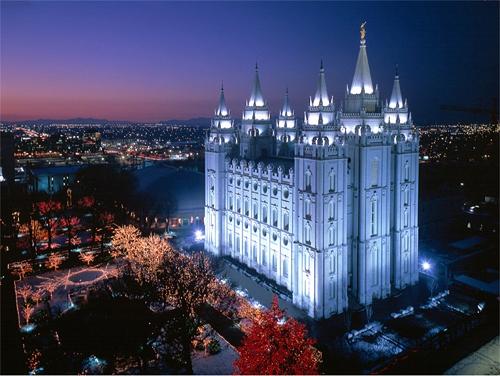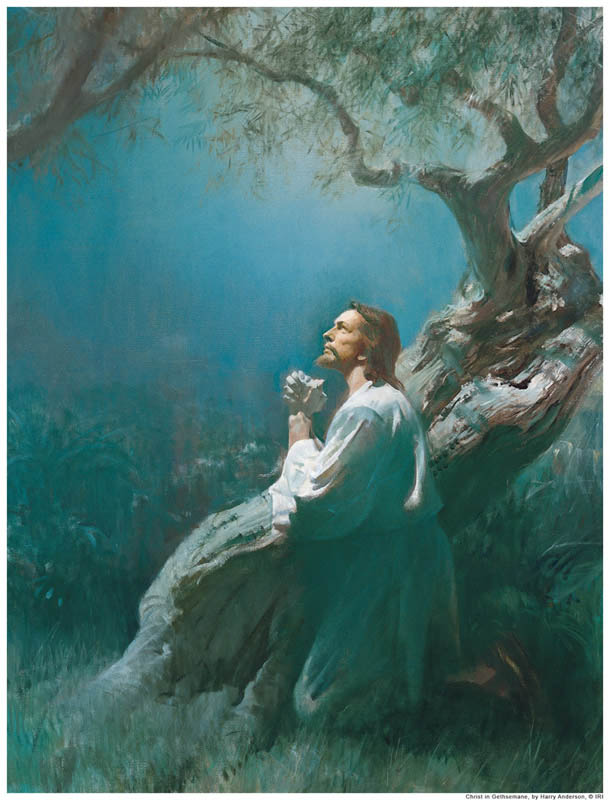So often, when people write about The Church of Jesus Christ of Latter-day Saints, whose members are sometimes called Mormons, they begin with a list of doctrines, addressing each one as though they could be explained in isolation. They can’t.
Have you ever looked at a random puzzle piece in a very large puzzle? By itself, the picture seldom means anything. However, when you later see that piece in the context of the rest of the puzzle, you understand what the lines and colors of that first piece meant. The piece needs the rest of the picture to have meaning.
 Religion is a lot like that puzzle. By itself, an individual doctrine can make no sense at all. Put into context with the other doctrine, suddenly it gains a clarity and meaning it did not have alone.
Religion is a lot like that puzzle. By itself, an individual doctrine can make no sense at all. Put into context with the other doctrine, suddenly it gains a clarity and meaning it did not have alone.
When I try to understand another person’s faith, one question I ask myself is, “If I believed this, would I then have to believe that?” In other words, I place a belief in the context of the larger picture. If I accepted the larger picture, do the details make sense to me then?
Understanding Mormonism means looking further than a simple list of teachings. You have to understand what role each teaching plays in the big picture. You also have to understand the difference between canonized doctrine and opinion. This can be particularly challenging unless you understand that all Mormons, including prophets, are permitted to have their own opinions on issues when no official doctrine has been canonized. This means that every word a prophet says is not necessarily official doctrine. It may simply be personal belief. Today, church leaders are more careful to specify when they are speaking personally rather than officially, but in the early days of the Church, leaders speculated more casually, speaking as they usually were to a small audience. Most often, their words were recorded by audience members and never verified by the speaker, so items such as the King Follett Discourse are not official doctrine because we can’t be sure they accurately reflect the words and intent of the speaker.
To understand how the big picture impacts an understanding of Mormonism, let’s take a look at a foundational teaching of Mormonism—the plan of salvation. For Mormons, the Plan of Salvation is a three-stage plan. The first stage takes place prior to birth. In this stage, God created our spirits and we lived with Him, developing our personality, character, and talents. We had agency—the right to choose. When the time came to come to Earth, some rebelled and refused to accept God’s plan for that stage of life. They wanted more security than the plan offered.
God intended for us to come to Earth to gain a body and a family, to have experiences and challenges, to enjoy blessings, and to seek out and then accept truth. We would be given commandments and expected to obey them. At the end of our lives, we would die, but would be resurrected and would also be judged based on the choices we had made. Some would demonstrate their worthiness to live in God’s presence forever. Some would choose not to.
However, justice would require that we lived perfectly in order to live with God. That wouldn’t be possible, so mercy offered the option of providing a Savior to do for us what we could not do for ourselves. He would live a sinless life, atone for our own sins, and then die and be resurrected.
Some rejected this plan because there was risk. If we rejected the atonement or lived a selfish life that made no room for eternal standards, we would lose the opportunity to be with God. Lucifer worked to convince people he could offer them all the safety and security they wanted by taking away their agency and giving it to him. He would then control our every action and thought and return us without sin. This involved no suffering or atonement on his part, of course. A third of those in this pre-mortal world followed Satan and lost the right to come to Earth, since there was no alternate plan, no way to come to earth without a Savior. The remainder came here. Those who love God and Jesus Christ enough to sacrifice some of Earth’s worldly pleasures will receive eternal blessings greater than anything they give up, including the right to be with their families forever and the right to live with God forever.
At the very least, all teachings of Mormonism have to fit into this foundational teaching. When we look at individual lists of teachings, we begin to see why Mormons believe some of the things they do. If you believe that family, done according to God’s guidelines, is forever, you are going to make family life important, as Mormons do. You will also marry in the Mormon temple, which is where eternal marriages are performed, and that means you will live in such a way as to be worthy to enter the temple. If you believe God knew and loved you before you were born, you will also accept that He placed you when and where you needed to be and you’ll find a way to maximize whatever situation you find yourself in, knowing He intended for you to learn and to grown in that setting.
When you find a list of Mormon beliefs, try to find out what the larger context is. What other beliefs impact and intersect that belief? How would it affect your thinking if you believed the larger context to be true? Looking at Mormonism—or any other religion—in this way helps you to develop empathy and to have a greater understanding of those whose beliefs might be different from your own.
About Terrie Lynn Bittner
The late Terrie Lynn Bittner—beloved wife, mother, grandmother, and friend—was the author of two homeschooling books and numerous articles, including several that appeared in Latter-day Saint magazines. She became a member of the Church at the age of 17 and began sharing her faith online in 1992.





